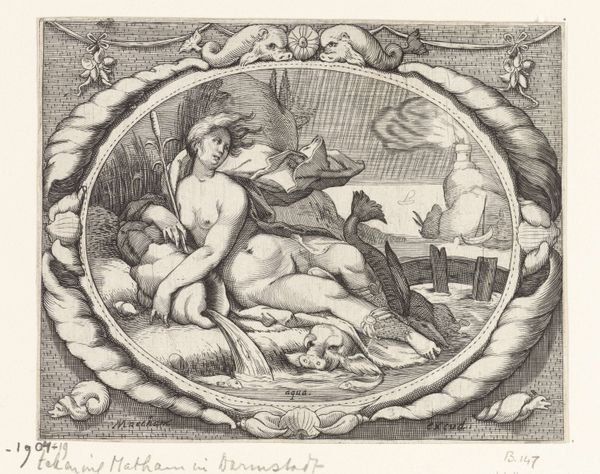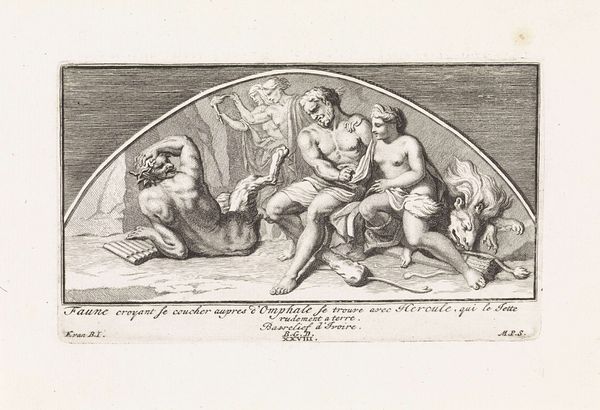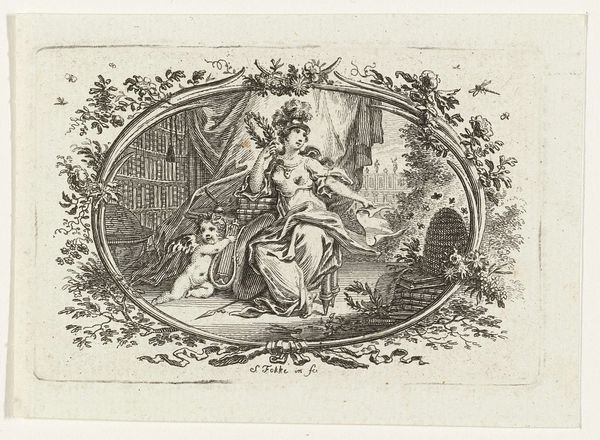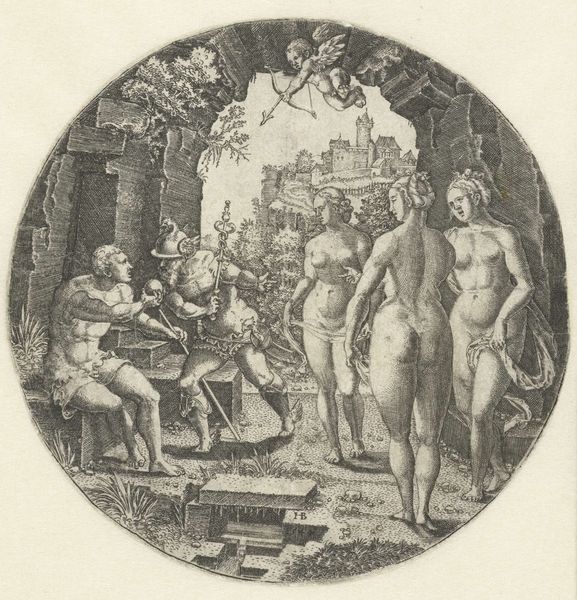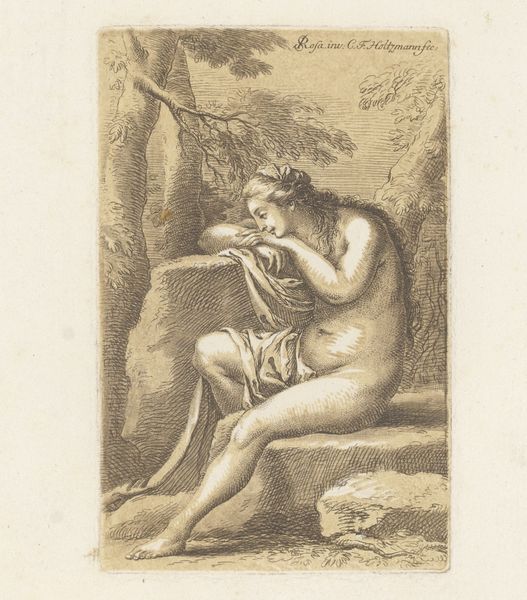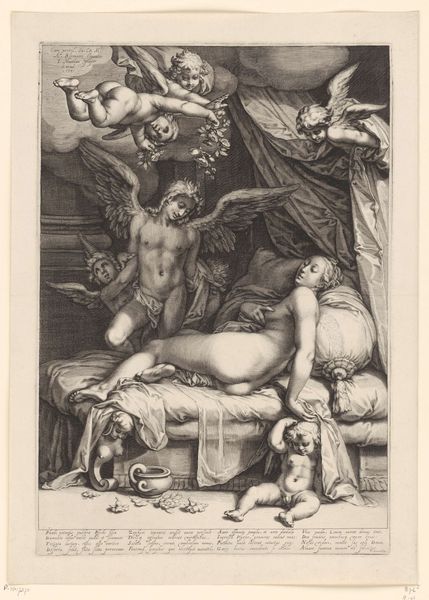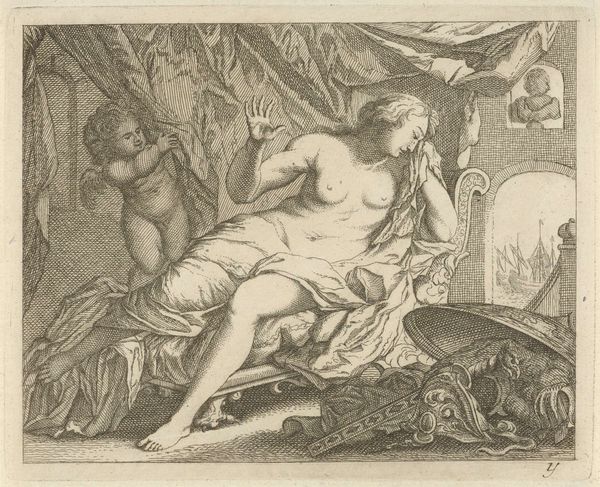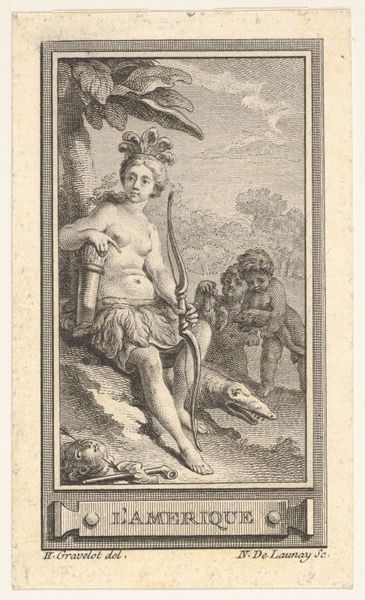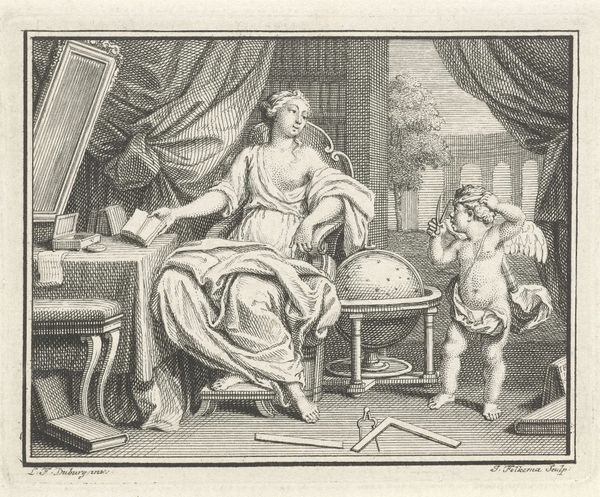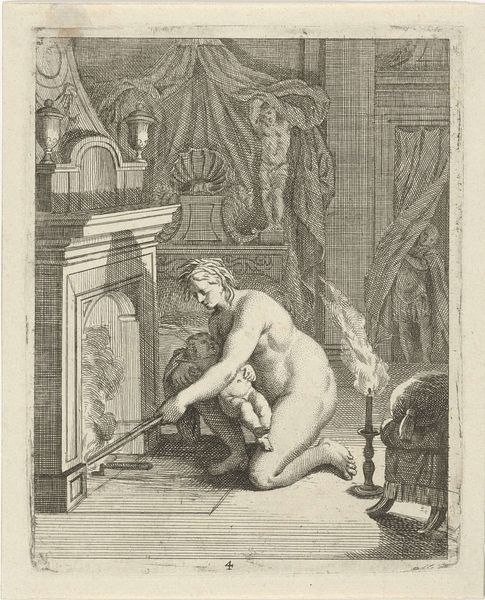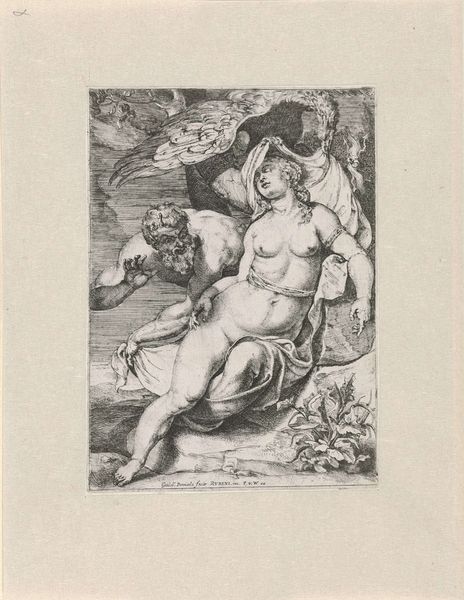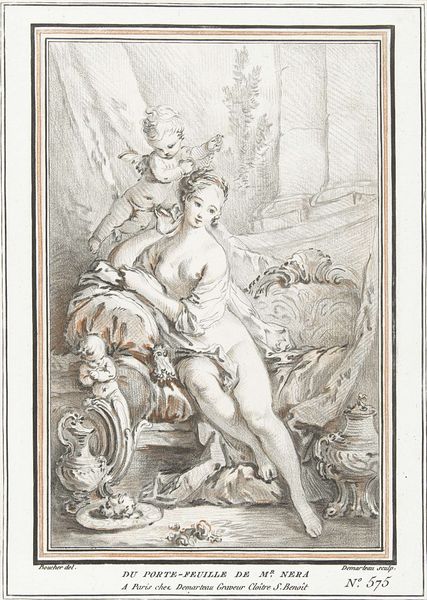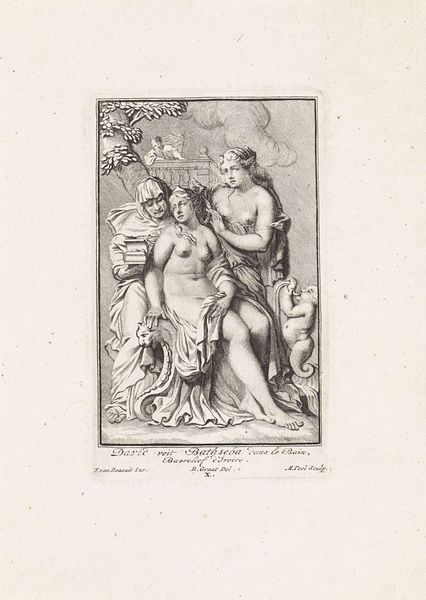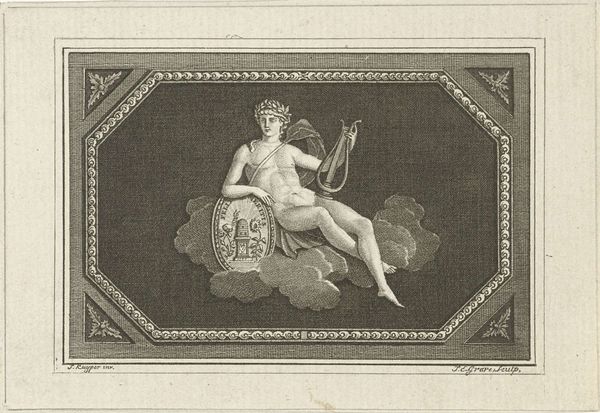
print, engraving
#
allegory
#
baroque
# print
#
old engraving style
#
figuration
#
form
#
line
#
history-painting
#
nude
#
engraving
Dimensions: height 121 mm, width 151 mm
Copyright: Rijks Museum: Open Domain
Jacob Matham's "Vuur," or "Ignis," etched around the late 16th century, presents a compelling allegory of fire. Here, we see the element personified as a muscular, bearded man reclining amidst flames and embers, striking a flint to ignite a spark. The act of creating fire, a divine gift in many mythologies, is echoed in the small vignette above, where Vulcan, the Roman god of fire, is depicted at his forge. Fire, a symbol of creation and destruction, is also linked to human ingenuity, represented here by the blacksmiths laboring in the background. Consider the recurring motif of the spark, from Prometheus stealing fire from the gods to the modern scientific pursuit of harnessing energy. Fire stirs primal emotions—the comfort of warmth, the fear of conflagration, the creative potential to transform. This duality has echoed through art and culture, engaging our collective memory and subconscious fears. The image of fire continues its cyclical journey, resurfacing in myriad forms, each time adapting to the evolving human experience.
Comments
No comments
Be the first to comment and join the conversation on the ultimate creative platform.
